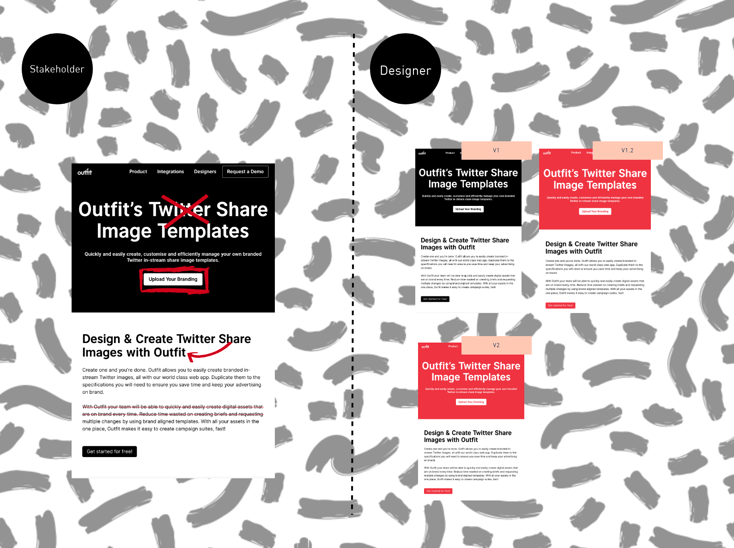Design, by its very nature, is iterative. When we start to involve multiple designer and stakeholder 'cooks' in the kitchen, the versions really do start to stack up.
In a creative team servicing a distributed network, document versioning is a necessary part of life. If this is your creative team, you will be familiar with the following scenario on a standard design project:

The Problem
Even with the strictest naming conventions in place, every coordinator's worst nightmare is a simple InDesign file that is updated and saved locally on a designers PC resulting in an outdated file distributed to stakeholders, or worst still, sent to press.
In addition to this we also have the added pressure of ensuring that we don't have multiple editors altering the master file at once, causing yet more chaos in our chain of 17,000 document versions called design_file_new_final(19) - ok, so I exaggerate.
So how do we innovate our process to ensure we mitigate this risk going forward?
Outfit and the Design Process
Typically when we create a new design document, we apply the design thinking process:
-1.png?width=300&name=new-piktochart_33690608%20(1)-1.png)
Outfit does not propose to replace designers or the design thinking process entirely. Instead, Outfit will change the way you think about iterating on a piece of design and increase the efficiency with which you release a new design to your stakeholders.
The place Outfit loves to exist is right at the point where aesthetically your design is polished, and functionally, it provides a solution to the problem your stakeholder set out to solve.
Variations vs. Versions
So how does Outfit deliver on its promise of no more V12?
The power of Outfit is that the structure of your documents become living, breathing templates rather than a collection of multiple versions of very similar documents with minor changes. These templates know your brand rules and the level of flexibility your stakeholders should have when personalising a branded document for their customers.
The efficiency in evolving a document comes through stakeholders being empowered to customise a document in a controlled environment. In a way it allows them to design without the designer for the high-churn material they require day-to-day.

Not only will artwork go through an efficient approval process before being released to customers, but we can retrospectively report on the many unique variations created from a template to assess the evolution and popularity of our original concept.
There is no greater evidence of your marketing team doing a great job of providing stakeholders material that makes their lives easier than a large portion of them using the document and a decrease in artwork amendment requests.
Templating our thinking
So what is the future of this way of thinking?
Imagine the next time you run a campaign, you already know the magic formula for the structure of each of the primary pieces that you repurpose, and your team could focus their time and energy on a radical new design.
It's closer than you might think!
